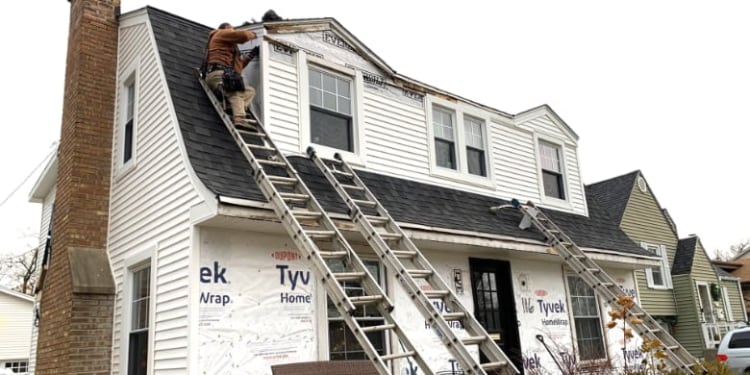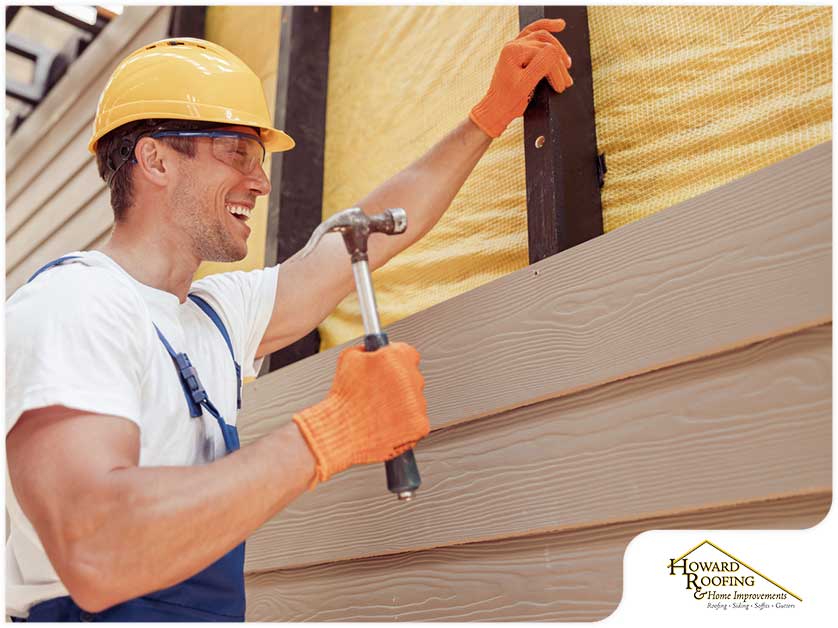Top-Rated Morris Siding Contractor Offering Expert Installation Services
Top-Rated Morris Siding Contractor Offering Expert Installation Services
Blog Article
The Essential Guide to the Various Types of Home Siding and Their Special Benefits
In the world of home improvement, choosing the ideal exterior siding is a vital decision that influences both visual charm and useful performance. With so lots of options to take into consideration, which home siding material genuinely stands out for your certain job?
Timber Home Siding
Wood siding, a prominent option for residential outsides, uses a classic visual that incorporates natural elegance with architectural honesty. This house siding material is readily available in different designs, including clapboard, roof shingles, and board-and-batten, allowing house owners to customize their façade to match their style choices. Timber house siding is commonly crafted from long lasting varieties such as cedar, redwood, or yearn, which are known for their durability and capacity to endure ecological stressors.
One of the primary advantages of timber exterior siding is its excellent insulation buildings, which can add to energy effectiveness and lower home heating prices. Furthermore, wood home siding is eco-friendly, making it an eco-friendly choice when sourced sustainably. Normal maintenance, including painting or discoloration, can lengthen its lifespan and improve its appearance, permitting house owners to preserve the all-natural charm of the timber.
Nonetheless, potential downsides consist of vulnerability to parasites, rot, and weather damage, necessitating appropriate therapy and upkeep - morris siding contractor. Despite these concerns, when appropriately taken care of, wood house siding can give a sturdy and gorgeous solution that boosts the character of a home while providing a warm, inviting environment

Vinyl House Siding
Vinyl house siding has arised as a leading option for house owners looking for a low-maintenance exterior option that integrates durability and price. This flexible product is crafted from polyvinyl chloride (PVC), making it resistant to various climate condition, including moisture and UV rays. Consequently, vinyl exterior siding does not warp, rot, or fade, making certain resilient visual appeal.
One of the primary advantages of plastic exterior siding is its comprehensive variety of styles and shades, allowing home owners to attain the wanted try to find their home without the demand for constant repainting. In addition, vinyl house siding is very easy to set up, which can substantially reduce labor costs during building or remodelling tasks.
Plastic house siding additionally contributes to energy efficiency. Several choices function insulation backing, which boosts thermal performance, assisting to preserve comfy indoor temperature levels and possibly decreasing energy expenses. Moreover, its smooth surface helps with very easy cleansing, requiring just regular washing with a garden pipe to eliminate dust and debris.
Fiber Concrete Exterior Siding
Fiber concrete siding has actually gained traction among home builders and homeowners alike due to its exceptional combination of resilience and aesthetic versatility. Made up of a mixture of sand, cellulose, and concrete fibers, this exterior siding alternative is crafted to hold up against severe climate condition, including high winds, heavy rain, and temperature changes, making it a durable option for household outsides.

One of the primary advantages of fiber concrete house siding is its resistance use this link to parasites, such as termites, and its non-combustible nature, offering boosted fire security. morris siding contractor. Additionally, it is offered in a wide range of styles, structures, and colors, allowing homeowners to accomplish their desired visual without sacrificing efficiency
An additional benefit is its reduced maintenance demands; fiber concrete siding usually requires paint or staining every 5-10 years, which is much less frequent than other products. Its durability contributes to a lower total price of ownership, as it reduces the need for regular repair services or replacements.
Ultimately, fiber cement siding represents an excellent investment for those looking for a durable, eye-catching, and functional outside alternative, combining both type and function to improve the home's visual charm.
Steel House Siding
The appeal of metal house siding lies in its durable toughness and modern-day aesthetic charm, making it a popular choice for modern architecture. Offered in products such as light weight aluminum and steel, metal exterior siding uses an array of colors and surfaces, allowing home owners to accomplish a tailored look that matches their design vision.

Power efficiency is an additional considerable advantage, as numerous metal house siding products are created with insulation options that assist manage indoor temperatures. This can result in reduced power prices in time. Additionally, steel house siding is usually recyclable, making it an environmentally friendly option for sustainability-minded homeowners.
The installment procedure for steel siding can be reasonably uncomplicated, leading to a quicker turn-around time for building jobs. In general, steel exterior siding integrates capability and style, making it a sensible option for those seeking a aesthetically attractive and enduring exterior coating.
Block and Stone House Siding
Block and rock siding stands apart as a classic option that boosts the aesthetic appeal of any type of home. Understood for their resilience and reduced maintenance, these materials give an outstanding roi while raising the home's curb charm. Readily available in More Help various colors, textures, and patterns, brick and stone can be customized to suit diverse architectural styles, from conventional to contemporary.
One of the primary benefits of block and stone exterior siding is their energy efficiency. Both products possess all-natural insulating buildings that help manage interior temperature levels, potentially reducing heating and cooling costs. In addition, they provide premium fire resistance contrasted to other house siding alternatives, web contributing to boosted safety and security.
An additional advantage is their long life. Brick and stone can last for decades, usually needing minimal upkeep past occasional cleaning. Unlike wood siding, they are unsusceptible bugs and rot, making sure a resilient outside that stands up to the aspects.
Final Thought
In summary, the choice of house siding significantly affects a home's aesthetic appeal, energy efficiency, and maintenance needs. Each kind of siding-- whether timber, plastic, fiber brick, steel, or concrete and stone-- offers unique benefits customized to different homeowner preferences and ecological conditions. Recognizing these options allows informed decisions that boost both the durability and aesthetic appeal of domestic outsides. Ultimately, selecting the ideal home siding is important for attaining an equilibrium between capability and layout in residential style.
One of the key benefits of timber siding is its exceptional insulation properties, which can add to energy efficiency and lower heating expenses. In addition, timber home siding is biodegradable, making it an ecologically friendly alternative when sourced sustainably.One of the main advantages of steel siding is its resistance to different ecological variables.Power efficiency is one more substantial advantage, as many steel home siding items are made with insulation alternatives that help regulate indoor temperatures. Each kind of home siding-- whether wood, plastic, fiber metal, cement, or brick and stone-- provides one-of-a-kind benefits tailored to numerous home owner choices and ecological problems.
Report this page